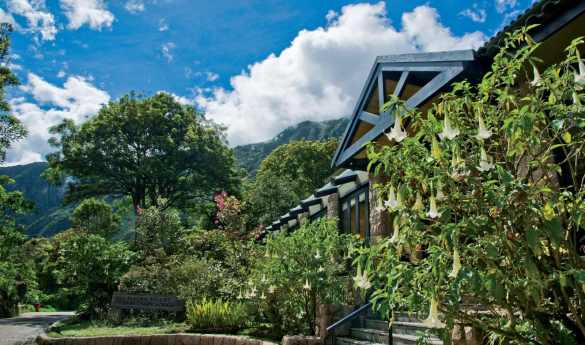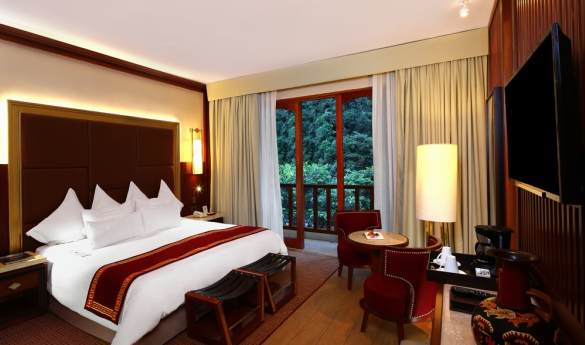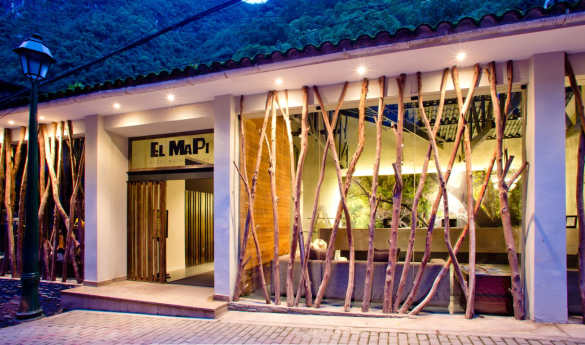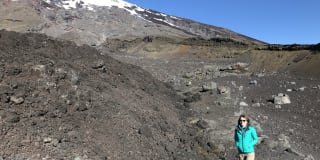Holidays in Machu Picchu, Peru
Whether you arrive at Machu Picchu on foot across the Inca Trail or in style on the luxurious Inca Rail train, your first sight of the magnificent ruins is likely to stay with you long after your return home. Surrounded by dramatic forest-clad peaks and vertiginous valleys, Machu Picchu is a masterpiece of ancient architecture, a mysterious and majestic wonder that rises proudly from the jungle.
Read more
Surrounded by dramatic forest-clad peaks and deep valleys, Machu Picchu, or ‘The Lost City’, is a masterpiece of ancient architecture. Your first sight of these magnificent ruins is likely to stay with you long after your return home.
From the time when Machu Picchu was discovered in 1911, this ancient site has drawn visitors from across the globe, with thousands travelling to the citadel every year. And with its well-preserved temples, houses, and palaces, which straddle the terraced plateau high above the lush valleys, it’s not hard to see why.
But aside from the striking visuals, what is Machu Picchu famous for, and what can you expect when you visit this iconic sight? Our experts have listed their favourite things to see and do at Machu Picchu so you can plan a truly memorable trip.
Before we dive in, it’s important to note that you must visit Machu Picchu with a guide and secure a permit before you arrive - but don’t worry, our travel specialists can help with this.
Things to see and do at Machu Picchu
Hike the Inca Trail
For those wondering how to visit Machu Picchu, the Inca Trail is by far the most popular way to get to the site.
One of the most well-known hiking trails in the world, tackling this iconic route is a sure-fire way to make your visit to Machu Picchu truly unforgettable.
This moderate-difficulty hiking trail showcases the variety of Peru’s landscapes, taking you through the snow-capped Andes and lush rainforests, and ending at the breathtaking ruins themselves. For the most authentic experience, opt for the four-day classic route which leads you along the same paths ancient messengers would have used to travel to and from the citadel. There is also a two-day route for those looking to combine a trip to Machu Picchu with visiting other destinations in Peru.
If you do plan to take on the Inca Trail, our travel specialists will handle all the admin, from finding you a licensed trekking operator to helping you secure a permit.
While this is the only hiking route that ends directly at the ruins, there are several alternative routes, such as the Lares Trail, each offering its own unique charm.
Wonder at the Inca stonework
As one of the oldest surviving Inca sites, it’s no wonder that Machu Picchu contains some of the best examples of Inca stonework still around today.
As you wander around the site, you’ll notice that the stonework isn’t very decorative, with many buildings made up of simple stones with no engravings. However, the skill of the Inca craftsmen who built Machu Picchu is something to marvel at as each stone is cut to measure, all precisely slotted together without the need for mortar.
Inside, the remains of the Temple of the Sun are another great example of Inca stonework. The unique semi-circular shape of this ancient temple, and the fact that so much of it is still standing, is a testament to the Incas being masters of this technique - an amazing sight to behold.
Explore the terraces
Alongside the iconic architecture, the sheer scale of Machu Picchu remains one of its most impressive qualities. This becomes most evident when you consider the agricultural terraces that surround the site, cascading down the mountainside.
The Incas built these giant stair-like structures so they could use the land around Machu Picchu for agriculture, with the network of terraces acting as a vast drainage system, preventing crops from getting too much water during the rainy months. The intricate terraces are also one of the main reasons we can still visit Machu Picchu, preserving this ancient site from centuries of landslides.
Aside from their intriguing cultural heritage, the terraces are simply impressive to look at, creating a striking visual effect - it’s impossible to imagine Machu Picchu without them.
Discover the Intihuatana
Amongst the characteristically simple architecture, there are a few sculptural and detailed pieces to spot at Machu Picchu.
A key example is the Intihuatana. Literally meaning ‘place to tie up the sun’, this huge stone slab sits at the highest point of Machu Picchu, inside the Sacred Plaza.
This ancient plinth, thought to act as a kind of sundial and astronomical observation point, gives us a glimpse into the Inca’s deeply ritualistic culture. Gazing at the structure, it’s easy to imagine the ceremonies and celebrations that might have taken place here.
When is the best time to visit Machu Picchu?
Wondering when to visit Machu Picchu? We recommend planning your trip between April and October to make the most of Peru’s dry season.
April and May are great times to travel before the summer crowds set in, but these months can bring occasional rainfall, so pack accordingly. June, July and August are the most popular months to visit Machu Picchu, and while the site will be much more crowded, the weather will also be sunny and dry, but not too hot – ideal for spending the day wandering around.
If trekking the Inca Trail is at the top of your list, you’ll be a bit more restricted on when you can visit. The trail itself is open most of the year but is closed in February for annual maintenance - although you can still take the Inca Rail train up to Machu Picchu at this time. The hike can also be more challenging during Peru’s rainy season between November and March, so we’d recommend visiting between May and September.
Whenever you choose to visit, our Destination Manager, Sophie Tomlin, gives her recommendations for how you can make the most of your time at Machu Picchu:
“Whilst everyone who first visits Machu Picchu must do so with a guide, we also recommend that more adventurous types return to explore the site the following morning at their leisure and also hike up to one of the two amazing vista points (either Huayna Picchu or Machu Picchu Mountain) that look out over the lost city from a bird’s-eye perspective.”
Where is Machu Picchu located?
Machu Picchu sits just outside of Cusco, the ancient capital of the Inca Empire in southeast Peru. This lively place is a great base for visiting Machu Picchu, but we’d also recommend setting aside a few days to explore the city itself. From mingling with locals at the colourful markets to wandering through the cobbled streets, there’s plenty to discover.
From Cusco, enjoy a scenic three-hour train ride through the Sacred Valley to Aguas Calientes, a town often referred to as ‘Machu Picchu city’ due to its proximity to the ruins. From here, you can take a 30-minute bus to the site itself.
Want to explore all that Peru has to offer? Our Ultimate Peru tour combines time at Machu Picchu with other key destinations like Cusco, so that you can visit multiple places in one trip.
Meet our specialists
Why Scott Dunn for Machu Picchu Holidays?
Unique to You

- We listen to your travel goals and craft unique trips that are bespoke to you.
- We’re with you every step of your life’s travel journey, from honeymoons to family trips and beyond.
Seamless Service

- Global offices in the UK, US, and Singapore for 24/7 seamless service.
- We offer flexibility if your plans change so you can book with confidence and peace of mind.
Carefully Curated Collection

- We’ve curated an elevated collection of accommodation, experiences, and guides.
- Committed to fostering close global relationships to continue bringing you unique experiences.
Luxury in Every Sense

- We deliver a sense of luxury that matters most to you.
- Awarded Condé Nast Traveller’s Top Travel Specialists in the World 12 years in a row.







